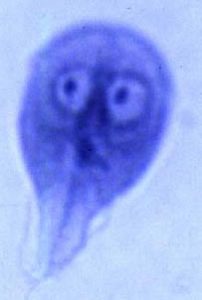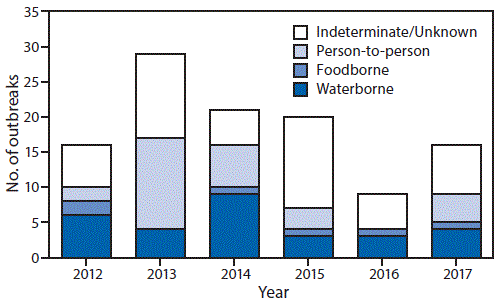Many thanks to our Norwegian correspondent who reports that two people admitted to Haukeland Hospital have been diagnosed with Giardia infection.
 “We have two confirmed cases, but it is possibly a third too. It is too early to say anything about the source of infection,” says Surveillance Authority in Bergen municipality Kari Stidal Øystese.
“We have two confirmed cases, but it is possibly a third too. It is too early to say anything about the source of infection,” says Surveillance Authority in Bergen municipality Kari Stidal Øystese.
Bergen is sensitive to Giardia outbreaks because in autumn 2004, the drinking water was infected by the Giardia parasite and approximately 5,000 people from Bergen became sick, and many have suffered after-effects for years.
In 2006, a SINTEF report commissioned drainage systems related to the buildings at Knatten, Starefossen and Tarlebøveien, triggered the epidemic. Local authority Torgeir Landvik would blame the dog owners for the fact that thousands of mountain people were infected by Giardia in the fall of 2004. But in 2015, an expert group picked up the dog-kit theory. “Based on available knowledge, Giardia infection from humans is still the most likely cause of the outbreak of disease and long-term strokes,” said the group’s conclusion.
A large community outbreak of waterborne giardiasis- delayed detection in a non-endemic urban area
BMC Public Health, 2006, 6:141, Karin Nygård, Barbara Schimmer, Øystein Søbstad, Anna Walde, Ingvar Tveit, Nina Langeland, Trygve Hausken and Preben Aavitsland, https://doi.org/10.1186/1471-2458-6-141
https://bmcpublichealth.biomedcentral.com/articles/10.1186/1471-2458-6-141
Background
Giardia is not endemic in Norway, and more than 90% of reported cases acquire the infection abroad. In late October 2004, an increase in laboratory confirmed cases of giardiasis was reported in the city of Bergen. An investigation was started to determine the source and extent of the outbreak in order to implement control measures.
Methods
Cases were identified through the laboratory conducting giardia diagnostics in the area. All laboratory-confirmed cases were mapped based on address of residence, and attack rates and relative risks were calculated for each water supply zone. A case control study was conducted among people living in the central area of Bergen using age- and sex matched controls randomly selected from the population register.
Results
The outbreak investigation showed that the outbreak started in late August and peaked in early October. A total of 1300 laboratory-confirmed cases were reported. Data from the Norwegian Prescription Database gave an estimate of 2500 cases treated for giardiasis probably linked to the outbreak. There was a predominance of women aged 20–29 years, with few children or elderly. The risk of infection for persons receiving water from the water supply serving Bergen city centre was significantly higher than for those receiving water from other supplies. Leaking sewage pipes combined with insufficient water treatment was the likely cause of the outbreak.
Conclusion
Late detection contributed to the large public health impact of this outbreak. Passive surveillance of laboratory-confirmed cases is not sufficient for timely detection of outbreaks with non-endemic infections.












